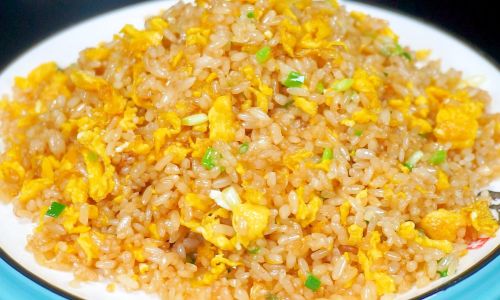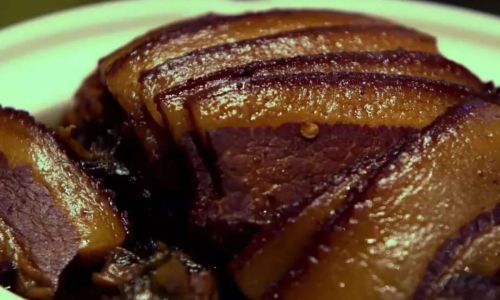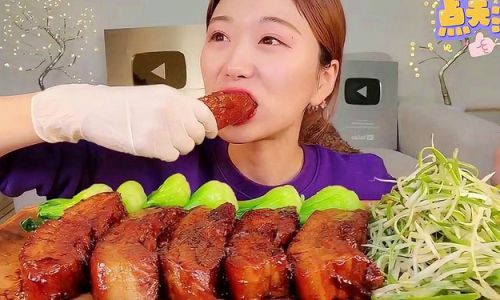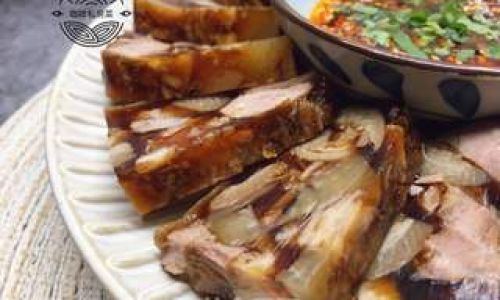Introduction
Fried rice, a beloved dish across countless cultures, is celebrated for its simplicity, versatility, and ability to transform leftovers into a delicious meal. Yet, for many home cooks and even seasoned chefs, achieving the coveted “non-stick” texture remains a challenge. Sticky, clumpy rice can turn a potential masterpiece into a frustrating ordeal, leaving pans scraped clean and dreams of fluffy, separate grains shattered. Fear not! This comprehensive guide delves into the science, techniques, and secrets behind cooking fried rice that glides effortlessly across your pan, ensuring restaurant-quality results with every stir-fry. From rice selection to heat mastery, we’ll explore the step-by-step methods to banish stickiness forever.
Chapter 1: The Foundation: Choosing the Right Rice
Not all rice is created equal, and the variety you choose lays the groundwork for non-stick success. Long-grain rice varieties like jasmine, basmati, or Thai fragrant rice are ideal due to their high starch content and dry, fluffy texture when cooked. Short-grain rice, such as sushi rice, contains more amylopectin starch, which becomes sticky when cooked—a trait undesirable for fried rice.
1 The Importance of Day-Old Rice
Freshly cooked rice is moist and soft, qualities that guarantee stickiness when fried. The solution? Use day-old rice. Cooking rice a day in advance allows it to dry out in the refrigerator, reducing moisture content and creating individual grains that resist clumping. To prepare:
- Cook 2 cups of rice with 2.5 cups of water (adjust slightly for altitude or stove type).
- Spread the cooked rice on a baking sheet to cool rapidly, then refrigerate uncovered for at least 12 hours.
- Avoid freezing rice, as ice crystals can rupture grains and create mushiness.
2 Rinsing Rice: A Preemptive Strike Against Starch
Even before cooking, rinsing rice under cold water removes excess surface starch, a primary culprit in stickiness. Place rice in a fine-mesh strainer and rinse until the water runs clear—typically 2–3 minutes. This step is non-negotiable for achieving separated grains.

Chapter 2: Equipment Matters: Selecting the Perfect Pan
Your choice of cookware can make or break your fried rice endeavor. The ideal pan balances heat retention, even distribution, and non-stick properties.
1 The Wok: A Traditional Ally
A carbon-steel wok is the gold standard for fried rice. Its sloped sides and high heat capacity allow for rapid tossing and even cooking. Key advantages:
- Heat Control: Woks excel at maintaining intense, localized heat, crucial for searing rice without steaming it.
- Seasoning: A well-seasoned wok develops a natural non-stick patina over time, reducing the need for excessive oil.
2 Alternative Pans: Cast Iron and Non-Stick
If a wok is unavailable, opt for a heavy-bottomed stainless-steel or cast-iron skillet. These pans retain heat well but require careful temperature management to prevent burning. Non-stick pans, while convenient, often lack the durability to withstand high heat and may leach chemicals at extreme temperatures.
Chapter 3: The Cooking Process: Step-by-Step Mastery
Achieving non-stick fried rice requires precision at every stage, from preheating to plating.
1 Preheating: The Ignition Key
A scorching-hot pan is non-negotiable. Preheat your wok or skillet over high heat for 3–5 minutes until droplets of water evaporate instantly. Add 1–2 tablespoons of oil (peanut, vegetable, or sesame oil work best) and swirl to coat the surface.
2 The Aromatic Base: Building Flavor Without Stick
Start by frying aromatics like garlic, ginger, or shallots in the hot oil. Their moisture will initially cool the pan slightly, but persistent high heat will re-establish the sear. Add proteins (chicken, shrimp, tofu) next, ensuring they’re patted dry to prevent steam buildup.
3 Introducing the Rice: The Moment of Truth
Add the chilled rice to the pan, breaking up any clumps with your spatula. Resist the urge to stir immediately—allow the rice to toast for 20–30 seconds, creating a slight crust that prevents sticking.
4 The Tossing Technique: Minimal Stirring, Maximum Motion
Aggressive stirring crushes grains and releases starch, leading to gloopiness. Instead, master the “toss” motion:
- Hold the pan handle firmly.
- Use a quick, upward flick of the wrist to flip the rice.
- Repeat every 5–10 seconds to ensure even cooking without overhandling.
5 Adding Liquid Ingredients: Strategic Moisture Control
Sauces like soy sauce or oyster sauce add flavor but introduce moisture. To prevent stickiness:
- Add liquids in stages, tossing vigorously after each addition.
- Opt for high-smoke-point oils to maintain pan temperature.
6 The Egg Element: Integrating Without Gloop
Eggs are a fried rice staple but can turn sticky if mishandled. Two methods ensure success:
- Scramble First: Cook beaten eggs in a separate pan, then fold into the rice at the end.
- Push-to-the-Side: Pour eggs directly into the wok, let them set slightly, then push to one side before adding rice.
Chapter 4: Advanced Techniques for Flawless Non-Stick Results
Even seasoned cooks can refine their approach with these expert tips.
1 The “Pan-Fried” Method: A Dry Heat Approach
For ultra-crispy rice, use minimal oil and cook in batches. This allows grains to develop a golden crust without steaming.
2 Deglazing: Salvaging Stuck Rice
If rice begins to stick, deglaze the pan with a splash of stock, wine, or even water. Scrape the bottom with a spatula to release caramelized bits, then continue tossing.

3 The Power of Baking Soda: pH Adjustment
A pinch of baking soda added to cooking water raises the rice’s pH, reducing stickiness. Use sparingly—too much alters flavor.
Chapter 5: Troubleshooting Common Pitfalls
Even the best plans go awry. Here’s how to rescue (or prevent) sticky disasters.
1 “My Rice Is Still Sticky!”
- Cause: Insufficient drying time or excess starch.
- Fix: Next time, rinse longer and refrigerate uncovered.
2 “The Pan Smokes Excessively!”
- Cause: Oil heated beyond its smoke point.
- Fix: Use oils with high smoke points (peanut, avocado) and reduce heat slightly.
3 “Grains Are Mushy!”
- Cause: Overcooked rice or too much liquid.
- Fix: Reduce cooking time and measure liquids precisely.
Chapter 6: Beyond the Basics: Creative Variations
Fried rice’s adaptability knows no bounds. Experiment with these global twists:
1 Thai Basil Fried Rice
Add chili, fish sauce, and fresh basil for a fragrant, spicy kick.
2 Japanese Yakimeshi
Incorporate katsuobushi (bonito flakes) and pickled ginger for umami depth.
3 Vegetarian “Yangzhou” Style
Load up with carrots, peas, and scrambled tofu for a meatless masterpiece.
Conclusion: The Journey to Non-Stick Perfection
Mastering non-stick fried rice is a blend of science and art. By selecting the right rice, wielding the proper equipment, and honing your technique, you’ll soon serve plates of pristine, fluffy grains that defy gravity—and expectations. Remember, patience is your greatest ally. Even seasoned chefs began with clumpy first attempts. Embrace the process, experiment fearlessly, and soon, your fried rice will be the stuff of legend.
Now, grab your wok, preheat that pan, and let the sizzle begin! Your journey to non-stick nirvana awaits.





0 comments